The approach of spring is heralded on the Vineyard, as well as at many other points on the coast, by the running of fish. Fish are to be had at any month in the year if one knows how and where to get them, but no movement of a school or body takes place during the winter in the waters near the shore or the land-locked lakes and ponds.
As spring draws near, however, and the full, fresh water ponds are opened to the sea, sending a great stream of sweet water offshore to mingle with the salt, there appear the great schools of various kinds of fish seeking the cove-heads and springs for spawning.
Of all the different fish that have been taken, none were as plentiful as the herring or alewives, and because there was a ready market for all that could be caught, the herring fishery assumed the greatest importance, even to such an extent that other fishing was lost sight of or ignored in many cases.
System Was Unique
Different systems of operating the fisheries were employed in the various ponds and creeks, and perhaps the unique one was that of the Tashmoo Herring Creek at Vineyard Haven. Possibly the largest fishery, there were by all accounts more individuals interested in it than in any other, and the regulations and laws of nearly a century ago are still in force, although the business has dwindled to almost nothing.
From its earliest history, Tashmoo Creek has been a free fishing place, although the title was claimed by private individuals until 1847 when the town of Tisbury legally acquired it, giving every bonafide resident of the town an interest in the creek and the fish caught there. As buildings were necessary, both for the storing of gear and for quarters for the fishermen, and as these of necessity had to be erected upon private property, amicable arrangements for this were made and still hold, while a special provision in the law allows the town to reimburse land-owners for any damage received through the pursuit of the industry.
To gain an idea of what the herring fishing was like when at its height, the creek must be visited, and this is reached by following the crookedest road in the world beneath oak trees that grow right up to the narrow single track. From one of Vineyard Haven’s principal streets the road runs down through the woods to the sand dunes and beach hummocks, clear to the group of weather-beaten shanties that stand just back of the crown of the beach between the sound and the pond creek.
These shanties are small, but each one has its chimney and the explorer will be told that in other days there was a horse stall attached to each one. Today, only one horse stall remains for those who visit the creek travel in cars which need no housing.
From the pond property to the beach the creek extends in a series of tortuous bends through the low marsh and in winter ends at the beach. This beach was opened just a few days since, according to custom, and a swift narrow stream was cutting through the sand and gravel, digging out a thoroughfare up which the spawn-laden herring will soon be making their way.
Herring Expected this Month
Some herring are expected in March if the weather is not too cold, but April is the herring month and always has been. Even then the fishing is no occupation for the anemic, as it is done particularly at night. Twice as many can be caught after dark, they say.
Dip-nets and seines are used in catching the herring. Box lanterns being set up on the banks of the creek, one on either side, two men take their position nearby with dip-nets and scoop up the fish as they run past. After standing watch for several hours they will be relieved by others and so on through the night.
At other times, a “dam net” is set across the creek fairly well up toward the pond. When a large bunch of fish have gathered at this net, seeking a way through, a short seine is dropped across the creek between them and the beach and they are pursed up and drawn ashore. From ten to seventy thousand herring were thus taken each night during the palmy days of the fishery and many thousands of dollars came into the town from their sale.
A Share for Everyone Present
According to the rules every resident who was present when the fish were hauled ashore was entitled to his share of the fish and for that reason there were sometimes as many as 125 men sleeping in the shanties or at work on the beach in those days. Some of the men would never leave their bunks but would draw their share just the same. Boys more than twelve years old were entitled to half a share and there were many of them present.
There was no dissatisfaction, however as the men who did the actual work received a double share and since it was impossible for all to work, the arrangement seemed to suit everyone.
Those who fished were divided into what were known as “boot gangs”, each consisting of about six men. These gangs fished each night in turn, the men dividing up the shift among themselves. As the gangs were housed separately they never disturbed one another during the night.
In the disposition of the catch, the Georges handliners took the greater part for bait. Fifteen or more of these big schooners at one time would come into Vineyard Haven or anchor off Tashmoo and buy from $150 to $200 worth of herring apiece. Many of the schooners would return for the second and third time and there were no days during the herring run when no vessels came.
There were also shipments of both the fresh and salted herring for food purposes, and in those days almost every barn and woodshed on the Island had a row of nails driven in on the south side, where “sticks” of herring were hung to dry. But all this was thirty, perhaps forty years ago.
Popularity Has Waned
Today the popularity of the herring as a food fish has waned and only a few old timers bother to salt and dry a few sticks. Diminished, too, in number are the Georgesmen, and for many years there have been no vessels taking bait at Vineyard Haven.
In place of the fifteen shanties at Tashmoo Creek there are now about five and only two are kept in repair, for the hundred-odd interested shareholders have dropped to a scant eight or ten.
True, the first run is taken and shipped each year and often a few barrels are salted, but the once-important industry is at very low ebb indeed. A few years ago when there was a market for scales there was a promise it might revive, but this did not last.
There is a promise, however, that the catch this year may reach old-time proportions and value. There are still some vessels to be baited and if, by reason of the damage done by the winter’s heaviest gale, the catch at Edgartown is insufficient to supply the demand, it will be natural to expect the trawlers to come to Vineyard Haven.
Air of Pathetic Desolation
In the meantime, there is an air of pathetic desolation around the herring creek. There are the shanties, some half-buried in the shifting sands. There, too, is an old salt house, the weather-beaten boards crumbling and ready to fall from the rotting frame, yet still housing gear and to judge from the faint odor, some salted herring. Old barrel-staves and hoops, the stakes of the dam net, all weathered and decaying in the cold, salty wind.
To the eastward are the woods and summer camps. To the west the beach and Makoniky, itself a deserted village.
Spring is nearly here and the camps will awaken to new life. Makoniky will doubtless sleep on as it was done, but will the herring fishery revive?
Will the road once more be cut deep by heavily-laden wheels and the paths worn hard by passing feet? Will smoke once more float from all of the little chimneys where the “boot gangs” warm and refresh themselves.
That the fish will come no one doubts, but the question is, will anyone want them?




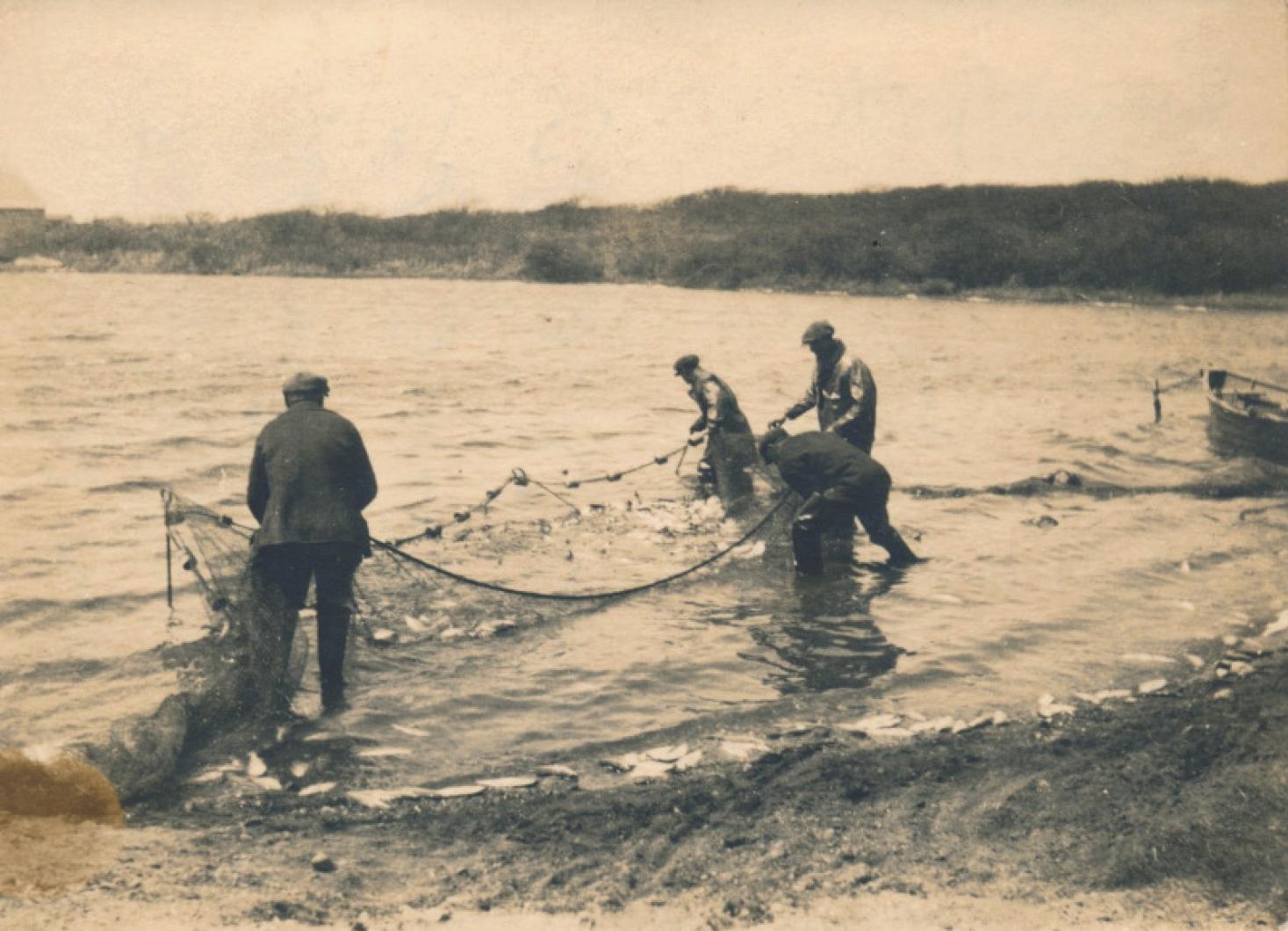
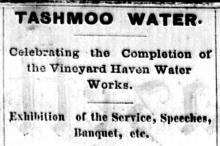

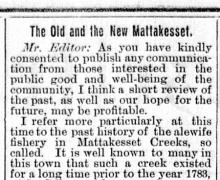
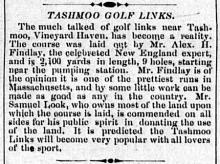
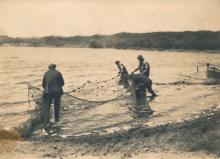
Comments